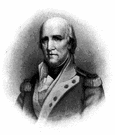The Making of the 50 States: Illinois
Part 1: In the Beginning In what is now Illinois long ago, the Woodland and Mound Builders cultures flourished, then gave way to the Mississippian culture. Among the Native American tribes living in what is now the State of Illinois in times past were the Cahokia, Chippewa, Kaskaskia, Miami, Michigamea, Moingwena, Peoria, Potawatomi, Sauk, and Tamarosa. They grew pumpkins, squash, and maize. They got fish from the Illinois River and participated in annual buffalo hunts. The word Illini was actually a French mangling of "Hileni" or "Illiniwek" as Illinois. This "name" notwithstanding, the Illini built one of the most powerful confederations the continent ever saw. Jacques
Marquette and Louis Jolliet explored much of the area in
1673. Also In 1712, the Illinois River became the boundary of France's Louisiana Territory. For many years, the Illini Confederation fought the French. These struggles weakened both sides, making the British victory in the French and Indian War even easier. After the British victory, the Illinois territory changed hands, from France to Great Britain. In 1771, the people of Illinois met at Kaskaskia and demanded a form of self-government; Great Britain refused, continuing to insist that all officials must be appointed by the British king.
Next page > The Rest of the Story > Page 1, 2
|
|
Social Studies for Kids
copyright 2002–2026
David White



 entering
the picture in the late 17th Century was
entering
the picture in the late 17th Century was  The
territory was soon part of battle again, during the
The
territory was soon part of battle again, during the

